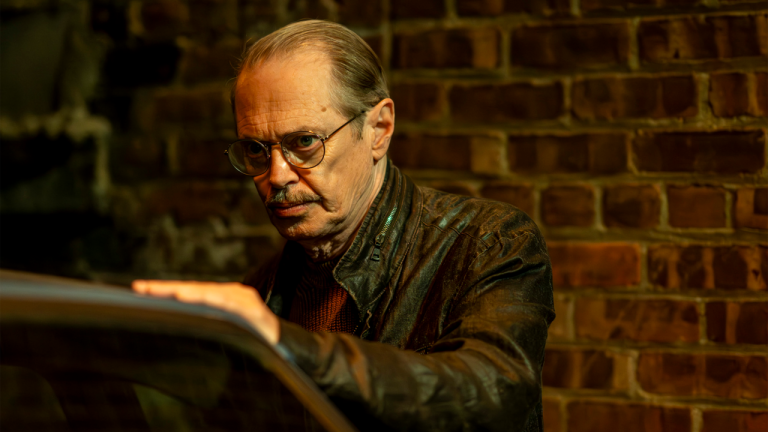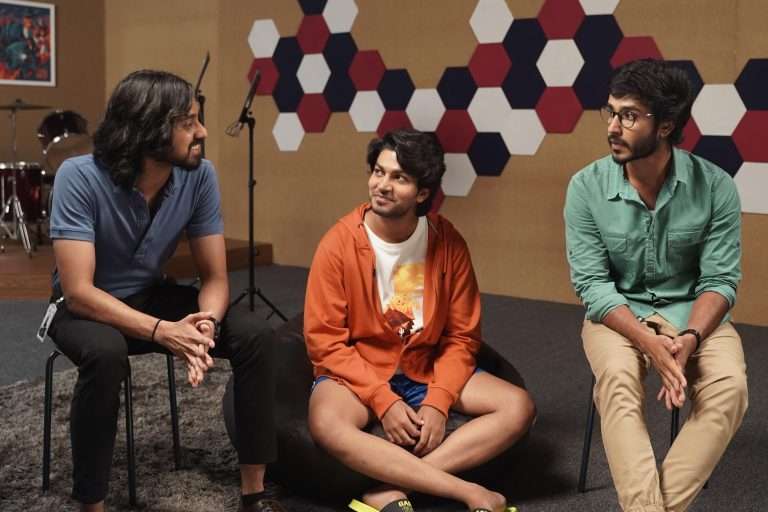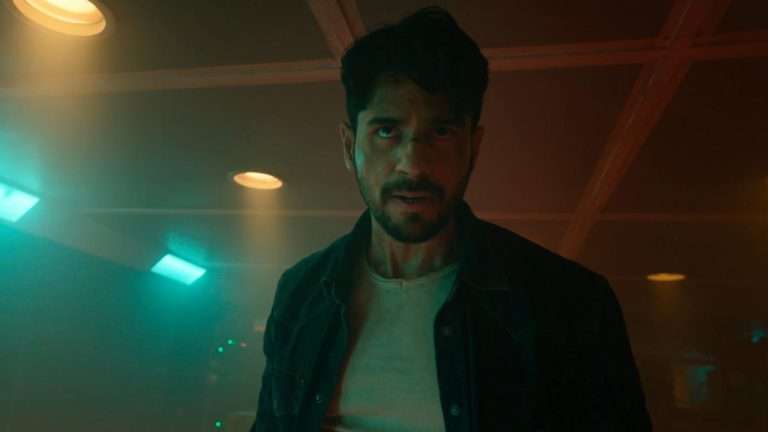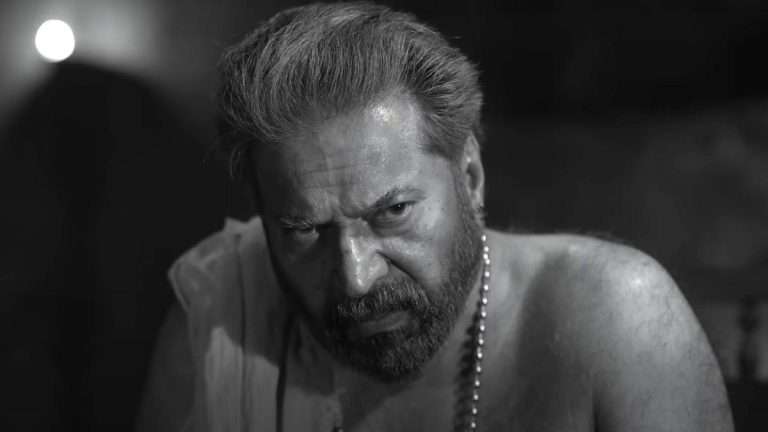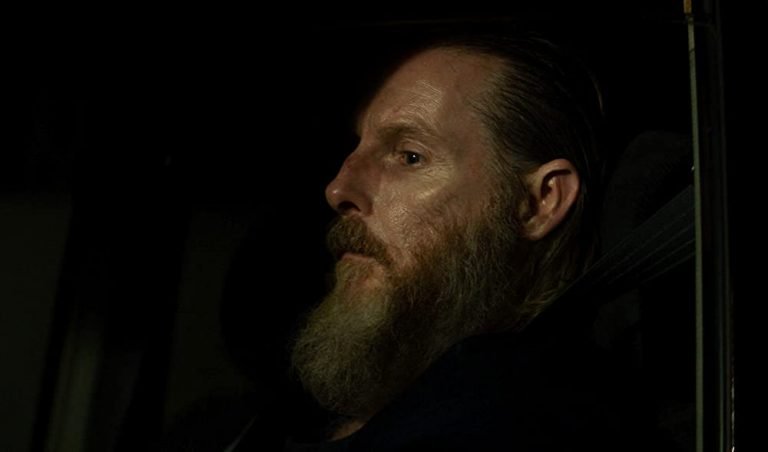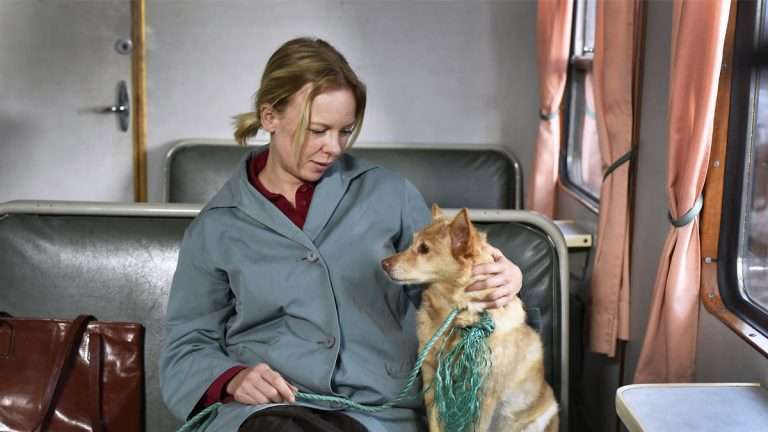Everything Everywhere All at Once Oscar: Daniel Kwan and Daniel Scheinert, or the “Daniels,” only have a couple of movies to their name—both of which are absurdist comedy dramas with unpredictable plots. Daniel Radcliffe and Paul Dano starred in the love-it-or-hate-it buddy movie Swiss Army Man in 2016, packing a surprising punch for a debut feature. That said, Paul Dano running around an island using a corpse as a ski jet has nothing on the complex absurdities found in last year’s Everything Everywhere All at Once.
Critics and viewers alike fell in love with Everything Everywhere All at Once upon release, commending its humor, clever writing, and visceral cinematography. It also contains timely allegories of tolerance, multiculturalism, and kindness in a way that isn’t a run-of-the-mill Hollywood sob story. Instead, the Daniels explore the literal meaning of life through a giant floating “everything” bagel. It sounds far-fetched. But it works, gifting viewers a fresh, psychedelic cinematic experience akin to an LSD trip that reveals the answers of the Universe (that answer being: “just be a rock.”)
The actual plot follows Evelyn Quan Wang (Michelle Yeoh)—a skint and stressed-out laundromat owner being audited by the IRS. As two struggling Chinese-American immigrants, Evelyn and her husband Waymond Wang (Ke Huy Quan) don’t have anything easy. Finding out she must save the entire world isn’t exactly what Evelyn needs. During a meeting with a merciless IRS inspector (brilliantly played by Jamie Lee Curtis), Waymond’s body is taken over by a different, distinctly more confident version of himself from the “Alphaverse.” He explains to Evelyn that each person has a million different versions of themselves across timelines and that “verse-jumping” allows you to jump between them, utilizing the skills and strengths of each version.
Then there’s a lot of metaphysical science jargon that we won’t get into now, but essentially the entire multiverse hangs in the balance. The (stylish, hilariously sarcastic) supervillain causing all this mayhem happens to be the “alpha” version of Evelyn’s daughter Joy (Stephanie Hsu)—creator of the word-destroying black hole inside the existential bagel MacGuffin.
Now the highest-grossing A24 film ever made (which is saying a lot for the most recognized and trusted independent film company around), Everything Everywhere All at Once has been nominated for a whopping 11 Oscars for this year’s upcoming ceremony on March 13th. The Daniels’s blend of philosophy, dadaism, and anarchy—cherry-picking elements from the sci-fi, animation, and martial arts genres—was an unexpected hit last spring. Much akin to Barry Jenkins’s A24 drama Moonlight, which won Best Picture in 2017, most people weren’t expecting an indie film (especially one so bizarre!) to snatch its way through the awards season. But it has. Or at least threatens to.
The 95th ceremony will see the likes of Steven Spielberg’s The Fablemans, Baz Luhrmann’s Elvis, and Martin McDonagh’s The Banshees of Inisherin being nominated for Best Picture. Michelle Yeoh is already the favorite for Best Actress (making her the first Asian nominee in that category). But why should Everything Everywhere All at Once take home Best Picture too? Here are five reasons:
1. It’s Really Smart
For those who haven’t seen the film, the description sounds pretty silly. Scratch that: very silly. However, the script is actually incredibly smart. It isn’t layered so much as connected into one big web of interlocking theories, teachings, beliefs, ideas, universes, allegories, and references. There’s so much information to absorb that it garners a second or even third cinema viewing just to take it all in. Because Everything Everywhere All at Once is a hybrid of different genres (that work seamlessly together—the only disjointed part about it is the SFX crack in the lens!), it can tap into a lot of different ideas and emotions.
On one level, there’s the (topical) mother-daughter story of Evelyn accepting Joy’s sexuality (and the cultural beliefs that feed into that). There’s the politics of immigration, a failing marriage, combating modern nihilism and ignorance with optimism and inner-child healing, regrets, memories, and the butterfly effect, shown through the parallel universes created with each new decision. New Age ideas of presence and surrender, embodied by the anthropomorphic rocks, and then, of course, the actual, action-packed saving of the world plot. All wrapped up in one beautifully shot, metatextual movie.
2. The Performances Are Incredible
As previously mentioned, leading lady Michelle Yeoh has been nominated for Best Actress, but hers wasn’t the only great performance in the movie. Jamie Lee Curtis’s cranky IRS inspector is thoroughly annoying to watch before she flies through the air comic book style. Yet we can’t help but like her, especially when she reappears as Evelyn’s lover in an alternate universe offering nothing but squishy love. Curtis was also adamant about embracing her “real” body rather than sucking in for a “trillion-dollar industry about hiding things,” which many fans—especially females—appreciated.
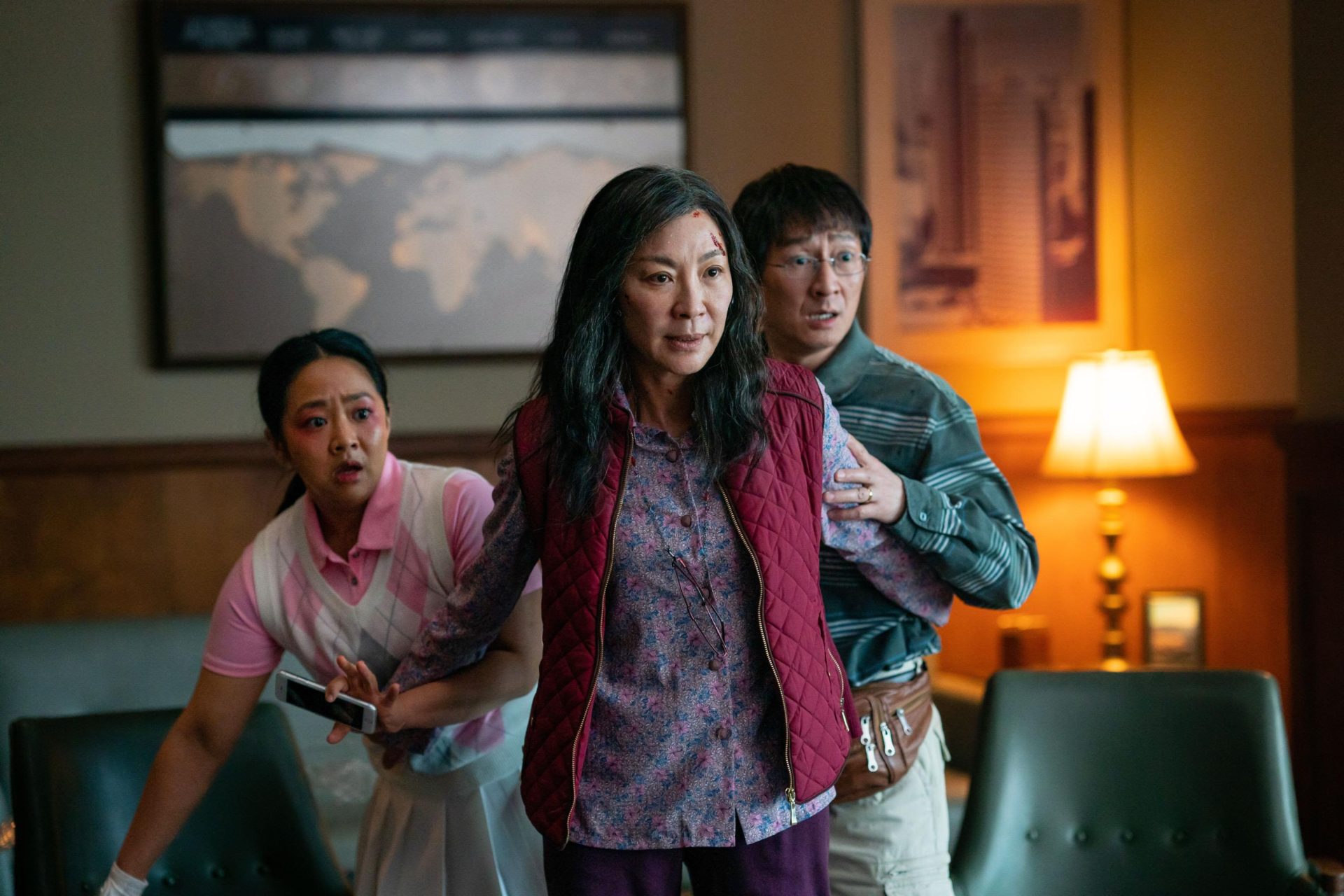
Stephanie Hsu’s bad-bitch performance as the unexpected antagonist Joy is something we could watch endlessly. Her wardrobe changes by the second, getting grander and wilder with each verse jump (another reason why Everything Everywhere All at Once should win Best Picture—the wardrobe and makeup department). She is the embodiment of our increasingly omnicidal society, yet presented with such personality and flair we kind of want to be her best friend. She’s not afraid to snap at the world, to laugh at men, and empower herself with feisty, feminist action. And Hsu proved the perfect casting choice for this.
3. It’s A Technical and Visual Feat
Like the script, Everything Everywhere All at Once isn’t just pretty—the imagery is smart. Each frame is done with intention, whether that being metaphorically, symbolically, comedically, or to simply wow us with spectacle. And we’re not talking explosions and overuse of CGI—we mean viewing two universes at once through sharded split screens. Or people throwing up confetti before exploding like a piñata. It’s both impressive and fun—the former made even more so by the fact VFX director Zak Stoltz had never supervised a feature film. The Daniels just hired him as an old work buddy.
Stoltz decided not to use a post house for Everything Everywhere All at Once, as it made the whole thing feel too impersonal (and despite its ambition, this film is very personal). Instead, a tiny team worked completely on their own, using amateur editing software and always opting for handmade effects over digital. Somehow, they still managed to make everything look polished and mind-blowing, all while retaining the sense that this film received a lot of TLC.
4. It’s Independent
Although Spielberg’s heart-warming, semi-autobiographical tale of courage, family, and art currently boasts the highest odds of winning, many cinephiles are praying that Everything Everywhere All at Once nabs Best Picture. Magical as The Fablemans is to watch, most can agree that yet another feel-good, chase-the-American-Dream family flick should make a little room for the underdog. Spielberg has already bagged 3 Academy Awards out of 22 nominations, so why not give someone else a shot?
Although A24 is probably more known and loved by everyday cinemagoers than some of the big studios, it’s still technically an independent company, which is always nice to award Best Picture. Most independent films fall into two categories: soppy, character-driven melodrama or super weird, avant-garde cinema. Everything Everywhere All at Once stands out because it’s neither (well, maybe a little weird). It’s an intelligent, meditative comedy-drama that made its modest budget of $25 million feel like a blockbuster. Plus, it grossed $106.9 million worldwide, screening in theatres for months beyond what most movies do.
5. The Way Audiences Felt After Watching It
Part of this huge box office earnings was down to an old marketing technique dwindling in the modern technology age: word-of-mouth. It’s the type of publicity you can’t buy. No amount of bus stop posters will have the same effect as a friend demanding, “you have to see this movie!” and singing its praises. The way audiences felt after watching is what brought more audiences in, and definitely a factor for why Everything Everywhere All at Once should win Best Picture.
When critics describe a movie as “uplifting,” it usually means corny, cliched romanticization, turning the positive adjective into a con. However, Everything Everywhere All at Once uplifts viewers in a different kind of way—a spiritual way. For all its googly eyes and nerdy time-traveling, Everything Everywhere All at Once is a divine slice of philosophy, inspiring us to be more aware, grateful, and caring. The “just be a rock scene” simplifies the movie’s allegory into one easy-to-digest sentence. My own experience watching it for the first time led to my friend buying me a novelty pet rock as a reminder to “just be.” Such is the power of this movie—it stays with you long after the credits.
If these reasons aren’t enough to earn it Best Picture, we don’t know what is! Every contender has its own unique story and strengths, but none of them marry so many elements, genres, and lessons—and so smoothly. Everything Everywhere All at Once will make you laugh, cry, think, gasp, wonder, understand, and dream. It will leave you feeling both lighter in spirit and more full of wisdom. It teaches a lesson as old as time, injected with pop culture references and smothered in glitter to keep it fresh. You simply won’t believe it’s only the Dainels’ second movie! So, if you haven’t seen Everything Everywhere All at Once yet, go and catch it in select theatres near you before March 13th. Do you agree it should win?



